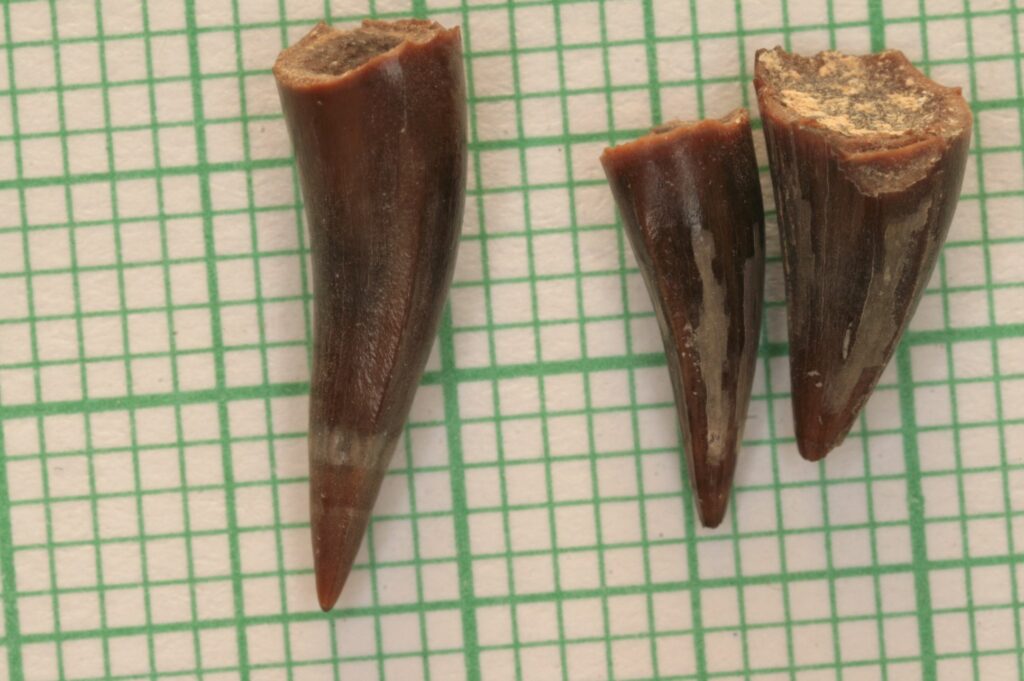Walking and time travel on Buda-Hill in Sámsonháza
We leave the volcanic formations described in detail in the chapter „Sámsonháza, protected excavation”, to the west and continue walking on the motor road, then to the right we approach the first dirt road to Buda Hill, the southern and western slopes of which are whitened from calcareous sediments by distant 16-15 million years formed in the archipelago of the early Badenian period.
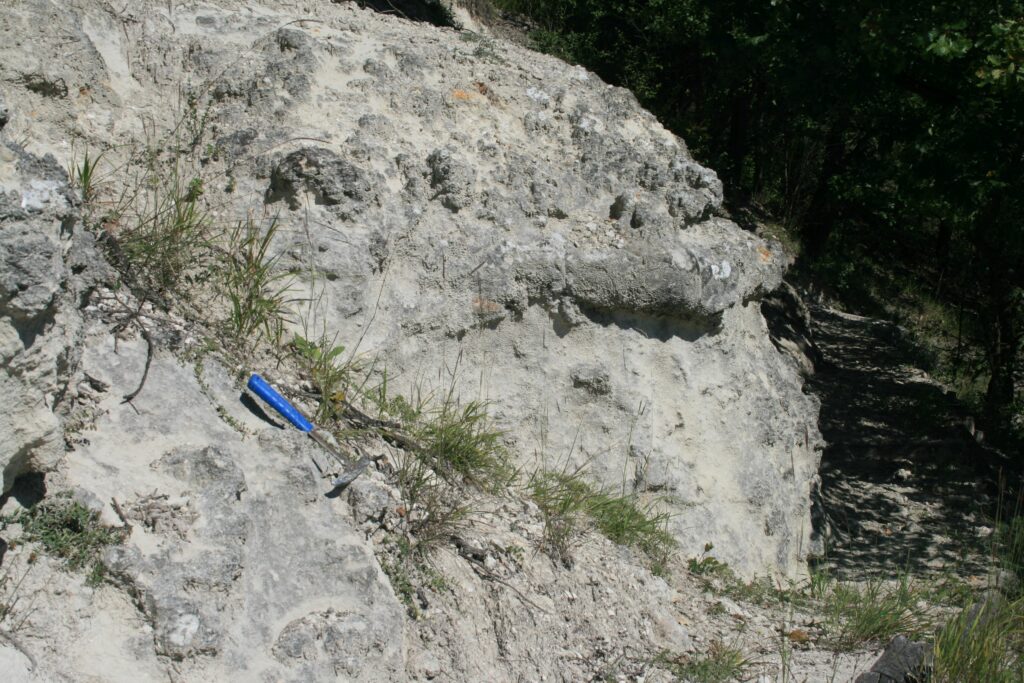
The type section of the Sámsonháza Branch of the Lajtai Limestone Formation can be found on the western slope of Buda Hill. The type section is the “standard” of a stratigraphic unit.
The layer of the section starts with gravel and lime conglomerate, followed by lime sand, which is rich in mollusc remains. 300 species of snails and 80 species of mussels were described here. Coral colonies also occur in reef development. In addition, we also know the remains of sea lilies, mosses, sea worms, sea urchins and cirripeds. Overall, this collection of finds is a heritage of a shallow-sea biocenosis community close to the coast.
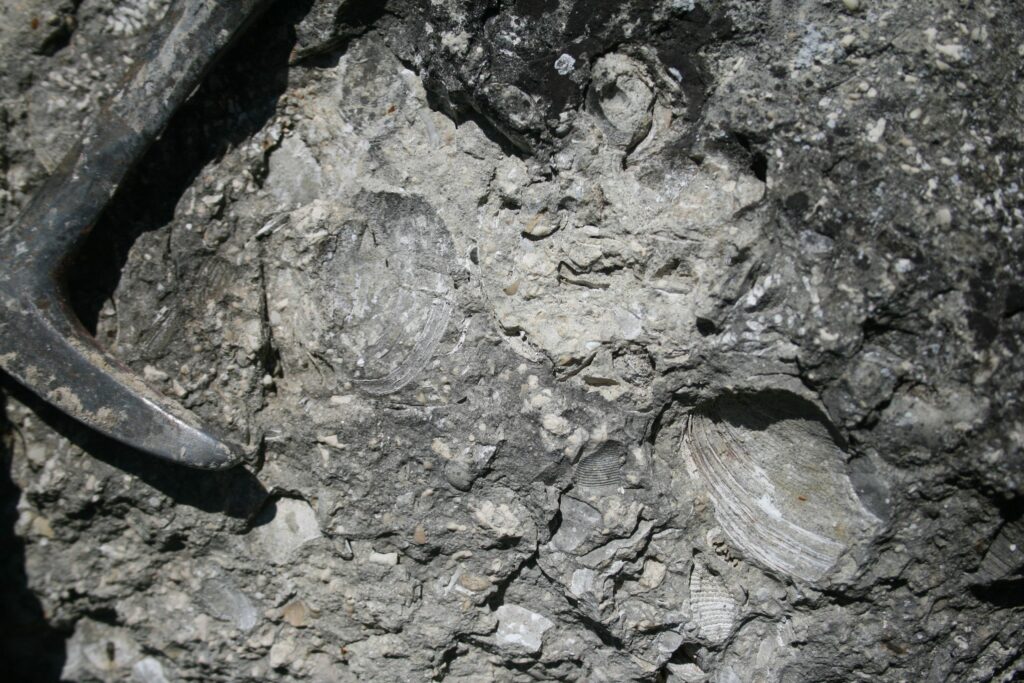
On the south-western slope of Buda Hill, a 100 m long excavation trench already reveals a series of strata that formed in the same period, but in an open water environment relatively remote from the shore. Its official name is Szilágyi Clay Marl. Its type profile is in the Mecsek Mountains. In the Buda Hill research ditches, yellowish-gray limestone marl and clay marl represent this rock formation, which is very rich in mollusk remains. In the case of mussels, double tortoise retention is not uncommon.
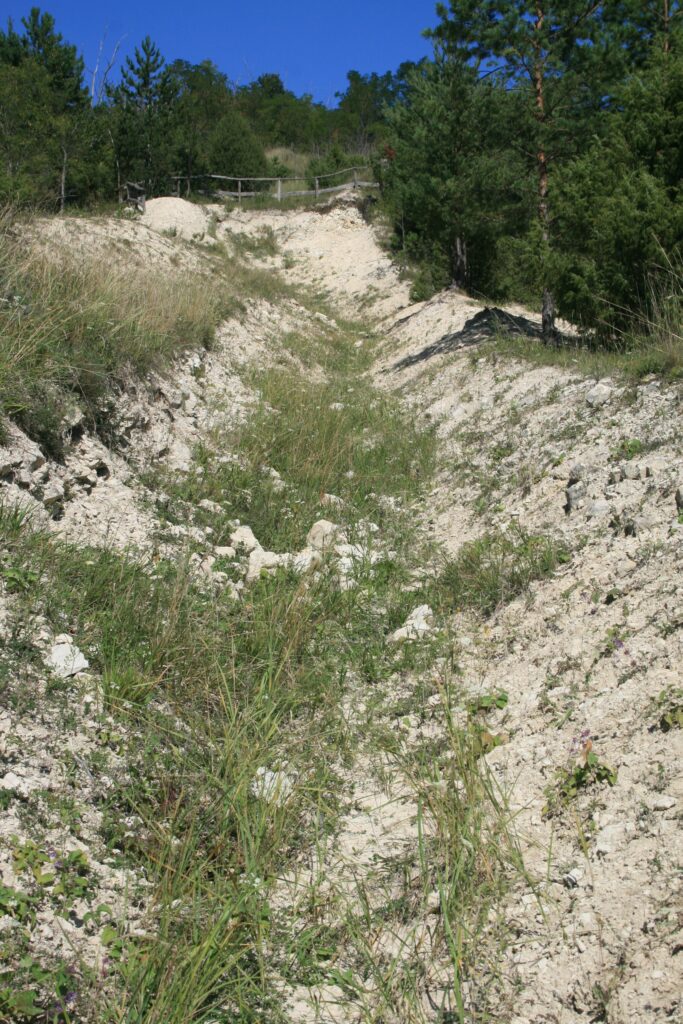
The 10-15 cm thick brown layer observed in the upper part of the research trench already consists of materials (pyroxene, quartz, pumice debris, gypsum) imported from the surrounding droughts, which indicates a shallow near-shore environment.
The 10-15 cm thick brown layer observed in the upper part of the research trench already consists of materials (pyroxene, quartz, pumice debris, gypsum) imported from the surrounding droughts, which indicates a shallow near-shore environment.
Above the reef we can already study calcareous sand, limestone and calcareous clay formed in a lagoon with sweetening water. It contains shells of freshwater, even terrestrial snails, as well as fragments of turtle shell. In the nearby Osoruzsa ditch, there are the sites that were carried out between 1995 and 1999 by participants of the Paleontological research camps of the Municipal Museum of Pásztó. A total of 3 tons of sample material was produced with voluntary student workforce.
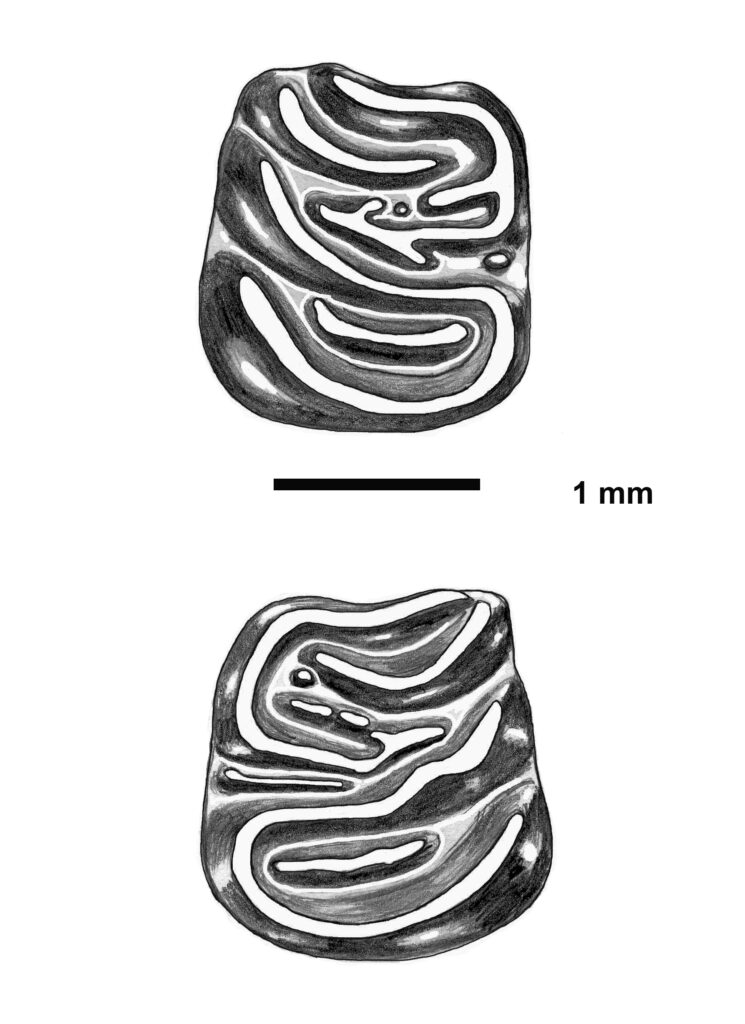
By washing the sediment, the tooth remains of crocodiles, hamsters, mice, squirrels and hedgehogs were collected. The occurrence of crocodile teeth is a particularly important climate indicator. These animals cannot permanently tolerate water colder than 10 ° C. Today, their northernmost occurrence is the Nile Delta. Clear evidence for the “Middle Miocene climate optimum” is mentioned earlier.
